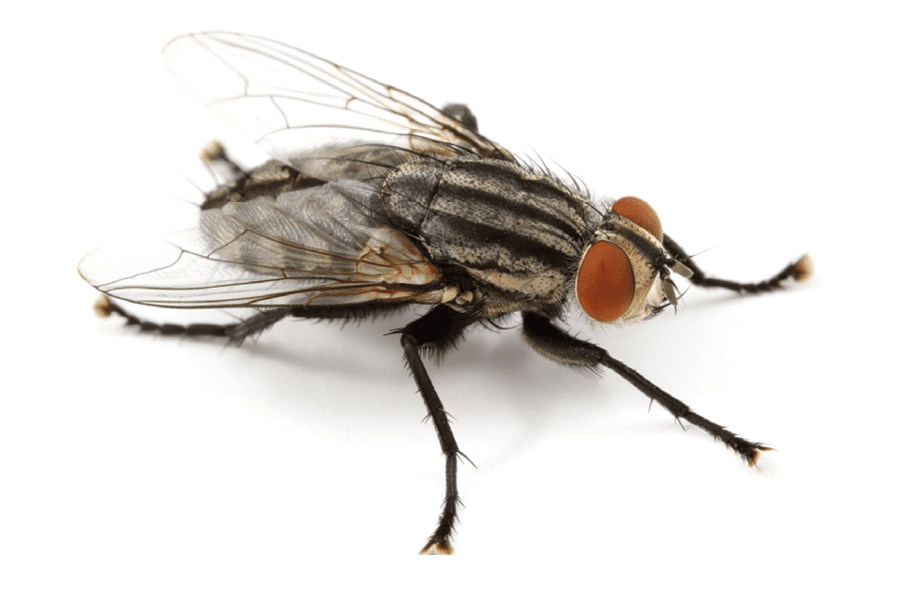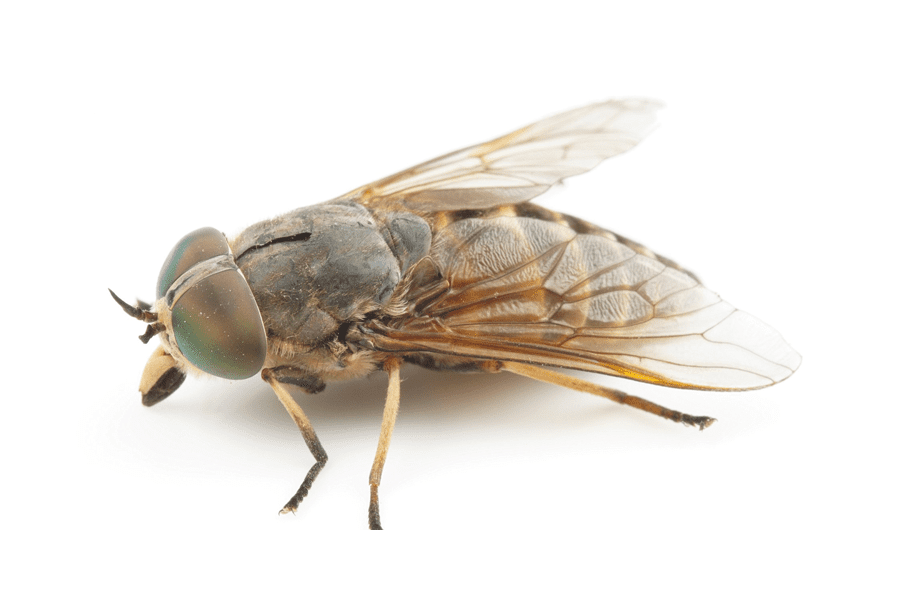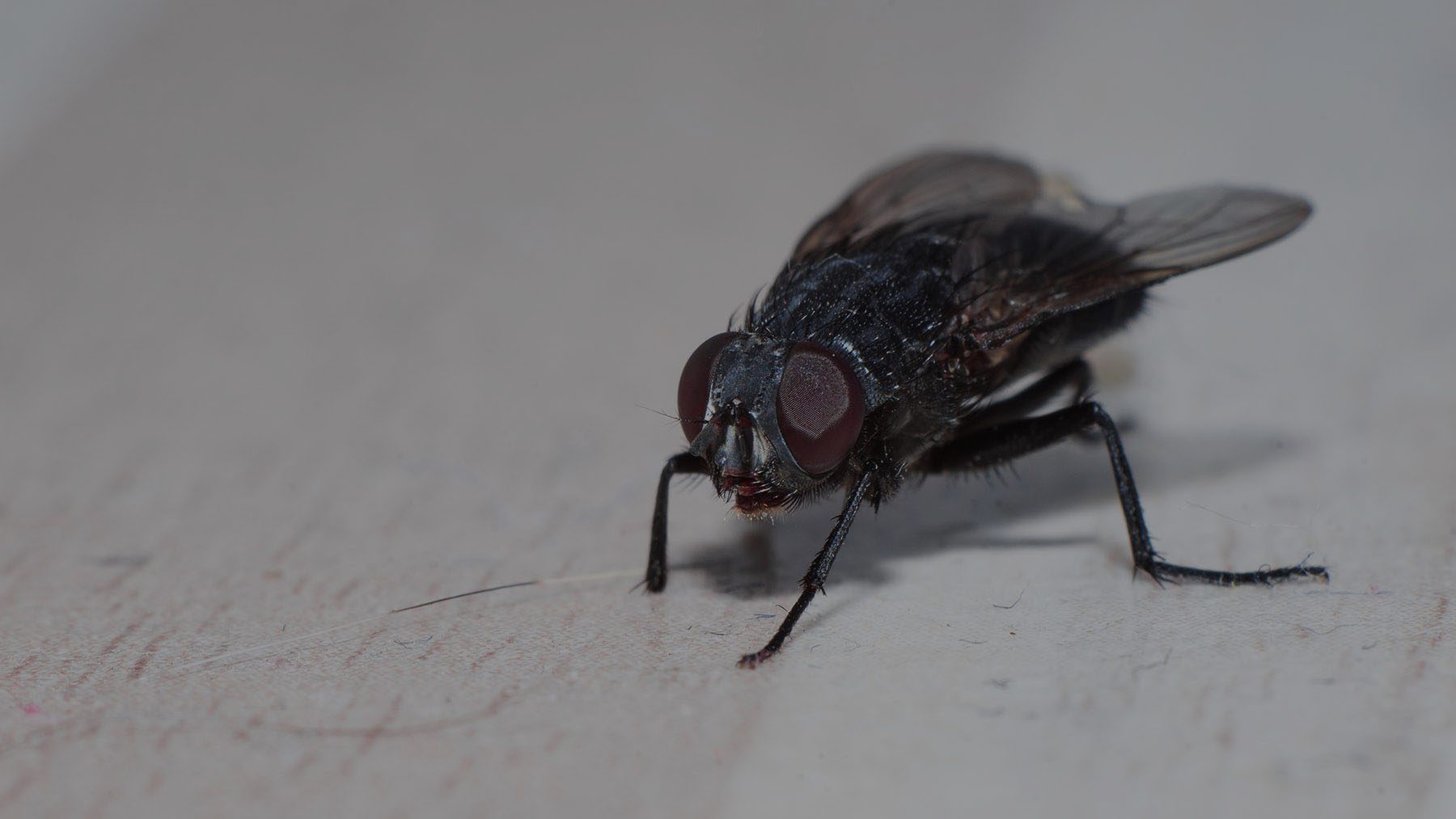Effective response to fly infestation
FLY CONTROL SOLUTIONS
Obviously, when a person sees flies around, the environment is likely to be viewed as unhygienic by that person. Flies are disease transmitters, since they feed on waste, carcasses, and garbage from humans and livestock. Some fly species bite, as well as being a threat, and pose severe health risks.
Despite their breeding and feeding habits, flies transmit diseases. Bacteria from which the fly would normally feed on their mouthpieces and footpads would ultimately spread to areas on which they land. Imagine if the food you’re about to eat is revealed.
Nevertheless, there are easy ways to recognise symptoms of a flying infestation and to take quick precautions because if left uncontrolled, it has the ability to turn into a serious infestation. Any fly infestation in a home or commercial building can be a real nuisance, and can also pose an increased threat to disease transmission such as E. Salmonella and Coli. Flies feed on animal and human waste, and when they come to rest, they regurgitate and excrete and thus spread disease. Our fly control strategies can bring down the fly population quickly and eliminate infestations.
Fly Infestation
Noticing any buzzing flies in your house or company does not necessarily mean an infestation occurs. It will, however, serve as a warning sign for taking other safety steps.
Common Signs
Tiny, dark clusters of spots the size of a pinhead found at ceilings and other wall surfaces and overhead structures. Clean areas that are hard to thoroughly clean, such as drainage channels and drains where waste can accumulate. Gully traps and areas around sinks and under damaged tiling of floors should be controlled as well.
Normal fly spotting of a large number of flies buzzing around garbage dump areas and the base of wheelie bins or other waste containers that pose a more serious problem. Test water pools everywhere like in guttering, tires, or old machinery. Waterlogged pot plants will attract flies too.
The appearance of maggots in their larval stage which are flies and may suggest a possible breeding site on your land. In waste areas you can discover maggots and deteriorate the food.
Tackling a Fly Infestation
Our skilled fly control service requires the detection and elimination of any breeding condition possible. Besides that, below are some of the other advantages of getting to pick a specialist to do it yourself.
- Free consultation of your home or business
- Fly species identification to allow the right fly control solution for targeting the invading species
- NEA certified technicians will visit our fully trained service technicians regularly to correctly identify your problem and provide the best solution
- Secure, tailored treatments with our advanced and hygienic insect light trap combined with our control measures provide secure and efficient treatments
- We provide guidance on realistic steps based on a strategy that you can easily take to reduce the risk of potential fly infestation.


House Fly
House flies are big disease carriers, and may infest all sorts of premises. They’re drawn to all food styles, including human food, pet food, animal feed, food waste, and even fecal food. Typically seeing adult flies is the most common indication of development, and a possible concern. Larvae can also be seen crawling to pupate out of breeding material.


Bluebottle Fly
Bluebottle flies can also be seen buzzing around dustbins. Such scavengers are drawn to pet faeces and dead animals, and are known as disease carriers. Their name comes from their iridescent colours which are identical to those of coloured bottles.


Sand Fly
You can see adult sand flies from April till September. They live on sandy banks of the river with an open landscape free from shade trees. Females tend to lay their eggs in humid soil or water.
Identifying Flies
The scenario of customers flying away with bare hands in a meal would have been alarming to business owners with fear of that flies population in their food and beverage company. The presence of flies in their eatery or restaurant may potentially affect the reputation of the shop.
Several of the push factors business owners may like to tackle in flying insect control are irritation, worries and concerns triggered by the presence of flies. House fly is a problem for all kinds of premises and big disease carriers. In as little as 6 to 8 weeks, one pair of flies will develop more than 1 million offsprings. Feed diversity from human food, animal feed, trash, excrement, dead animals. Preferably sludge, waste or rotting organic matter are potential breeding grounds for flies.
So knowing the signs of flies issue is crucial knowing how to spot the warning signs before flies begin to inflict significant health and safety hazards on you and your diners. The appearance of flies on the assumption itself is just one of the indicators of infestation of flies, of course.
Right identification will help you select the most appropriate control method for dealing respectively with the various fly species. For survival, flies depend heavily on their senses of sight. Their big, compound eyes consist of thousands of individual lenses and are very movement reactive. And it is almost difficult to capture a fly with your bare hands, far less to locate a visible moving fly with accuracy.
Fly Control Tips
If you want to monitor your own flying insect problem, you’ve got a few simple and cheap options. Case scenario: The noodle store employee attempted to throw a pair of bats into the air with an electric fly bat in hand. With 30 to 50 flies swooping rapidly in and out, swatting the flies with the bat along with its lacklustre swings is proving futile efforts. Flies can flap their wings 200 times a second. That’s how easily a fly can get away at the slightest detectable movement. Later, with more unsuccessful attempts to beat these buzzing flies coming in, the employee would soon give up. Whether it’s at the local store or online, you could find some electric fly swatters that you can use to swat yourself at the flies. Using manual strength and a random capture pattern, the output of such an electric fly swatter is very poor, as you can not capture many flies. For best effectiveness, some may consider DIY fly traps to use and be put in strategic locations. Without determined and controlled skilled capture rate as well as the area size well considered, your efforts to capture DIY fly can be all in vain. To live the flies need food, water, and shelter. Here are a few tips for DIY, and more effectively control your fly pest problem:
- Keep clean and odor-free outside areas as flies absorb odours.
- Place all food supplies in airtight containers or in the refrigerator, because exposed food attracts flies and raises food contamination risks.
- Remove waste from your home, as flies feed on garbage and spills of food.
- Remove any decomposing artefacts and rising humidity, as flies feed on rotting organic matter and moist matter.
- Wash bins of garbage daily.
How to Keep Flies Away
Flies can be a nuisance problem for businesses and homes. A fly infestation may pose a significant health danger, as a variety of diseases are known to spread by flies. There are some practical steps you can take if you wish to stop flies. Many of these approaches are absolutely cost-free and need only your time to take action. Recommended steps include making indoor and outdoor improvements to cover all potential hot spots and to ensure successful fly power.
Minimising Fly Infestation Tips
| Deny flies acces |
| Keep windows and doors closed. |
| Flyscreens |
| Fit flyscreens to windows especially around kitchen and waste areas. |
| Cover all food |
| Flies spread diseases by landing on food before we eat it. |
| Clear food waste |
| Simple food debris and liquid spillage under kitchen benches and equipment, from food processing and preparation areas. |
| Seal dustbins |
| Ensure all waste containers have tightly sealed lids. |
| Floormats |
| Ensure that every month grease build-up is thoroughly cleaned. |
| Pets |
| Clean the animals after. Not only are faeces a perfect breeding ground for flies, they may land on your food before landing there. |
| Clear up dead flies |
| Fly carcasses provide a tasty snack for other pests such as carpet beetles. |
| Clean drains |
| Ensure drains are kept clean and free of debris to reduce fly breeding sites. |
Common house flies are attracted to decaying organic waste such as faeces and rotting meat, while fruit flies look for sugars and feed on overripe fruit, spilled soft drinks and alcohol more commonly.


Fruit Fly
Fruit flies are usually found to infest fruit or float around fermenting residues found in restaurants, parcels of fruit orchards & vegetables, and breweries. They are able to breed rotting fruit, unclean drains, and even clean utensils. Fruit flies can complete their development in as little as 1 week, under ideal temperature conditions.


Flesh Fly
They’re drawn to rotting garbage, excrement, and human foods–making human health dangerous. The female deposits live larvae on an adequate feeding medium (this may range from spoiled meat or fish, or animal excrement, or from the rotting food waste found in garbage bins). Larvae feed in neighbouring drier sections for a few days, then switch away from the feeding medium to pupate.


Horse Fly
Horse flies are a pest to cattle. Relentless biting attacks by females can lead in some animals to a reduced weight gain. Male horse flies are primarily pollen and nectar feeders, and are most active in daytime. Horse fly bites can also be particularly painful for humans. They have mouth parts that act like miniature scissors, which they use with a scissor-like motion to cut the skin open.
Benefits of a Professional Service
We use the following methods and control products to remove fly infestations:
Insect Light Trap
We can use a variety of insect light traps to cater for different conditions and demands.
All our light traps use innovative technologies to catch flies efficiently and in a hygienic way. UV light technology is used by the units to attract flies and then trap them on a hidden glue board which makes this technique very safe and hygienic.
Using energy-saving bulbs powered by electronic ballast, the new insect light trap technology often results in a higher level of efficiency and can be used in environments such as restaurants, offices, food processing areas and industrial and manufacturing plants making this technique very healthy, hygienic and non-disruptive to day-to-day working.
Thermal Fogging and Residual ULV misting
To get the most efficient control it is important to fog at the right time when flies are most involved. It is possible to use odourless, low toxic and environmentally friendly insecticides by fogging and ultra low volume (ULV) spray to leave a residual effect to minimise fly populations
Did you know?
House flies rely on their sense of smell to locate food. Holding food in airtight containers helps avoid its attraction. Usually active during daytime, house flies are drawn to garbage, waste, excrement from humans, dung and rotting items. Good housekeeping habits and sanitation would certainly help get rid of the flies.
How to Get Rid of Flies in Your Home and in Your Business
Because of the health threats they pose, flies are considered dangerous pests, and they might likely carry you, your family and employees. In addition to carrying disease-causing organisms on their skins, body hairs, feet, and mouthparts, flies disperse these pathogens into our food by vomiting and dropping faecal matter. With flies defecating every few minutes and an effective rate of reproduction producing an average of 75 to 100 fly babies within 24 hours, a fly-infestation can get out of control too quickly.
Although basic home care tips can be performed at home to reduce the possibility of a risk of flying infestation, there are specific aspects and scope of fly control needs at a business premise. Food processing, food & beverage, industrial & manufacturing business sectors all the more need rigorous pest control efforts that leave no room for error in pest problems. Health and safety and its compliance with local government laws are a key concern. Professional approaches for fly protection include using Residual Spray and Insect Light Traps. An insect light trap effectively attracts and captures flies as flies have compound eyes that make them prone to UV lighting using the captures. To ensure an optimal capture rate, it is necessary to have expert advice on where to position the traps in strategic locations. A local pest control company in Singapore will help ease your fly control concerns and time spent tracking regularly so you can fix the flying issue and focus more on running the business at the same time. Based on how large or small the catchment area is, specific business requirements for Insect Light Traps can be personalised. For cafes and restaurants, fly traps may even be mounted and performed discreetly without customers seeing unsightly trapped flies.
How to get rid of flies in your food business
Flies are a large and common pest found in nearly all of the main risk areas. Food protection starts from where the food is kept and processed. Ensure sure all of the food is properly prepared and secured, and keep good housekeeping to prevent food and water for flies to breed. Preparation of food inside the kitchen plays a major role in reducing the potential for infestation of pests, such as flies. Fruit fly, for example, feeds on fruit, vegetables, and fermented liquid while house fly feeds on human food, garbage, and excrement. These are common ingredients found in the kitchen or leftovers. The worst scenario is to find flies inside the serving or dining area.
Flies can spread diseases such as salmonellosis, measles, dysentery, typhoid fever, and cholera. They harbour over 100 different pathogenic species and can potentially put diners at health and safety risks to food consumption.
Deposit or waste field should not always be ignored. This is because, stuff like fermenting waste, unclean drains, decay or garbage are drawn to flies. If the lid is uncovered, not emptied or kept clean, flies can potentially breed and fly into the preparation and serving areas of food.
Skilled approaches to control pests include the use of fly trap to efficiently control a fly infestation. Such flies are attracted by the use of UV light in the insect fly trap and stuck on a sticky surface. With the best fly pest coverage a suitable fly trap model must be used according to the area model of your premise. Glue boards can also be discreetly concealed in a fly trap unit to ensure a fly trap is aesthetically manageable and suits the aesthetics of a café or F&B company.
Fly control is essential and critical for the pest control needs of a food & beverage company. Food health is a top priority and food companies must comply with the regulatory requirements. A skilled fly trapping pest control service includes routine maintenance service provided. Strict pest control in the food industry often includes fly capture rate monitoring and analysis to ensure a fly infestation is not gaining a foothold in sensitive areas.
All food establishments are expected to be subject to strict compliance with food regulations otherwise penalty may be levied on business owners, including demerit points, financial penalty or business closure. With effective steps to manage pests and cultivated housekeeping practices these losses can be reduced and avoided.
Tips on Getting Rid of Flies in Restaurants
- Find the presence of larvae and pupae in potential locations such as garbage / waste disposal area, filthy drains, sewage, rotting matter
- Resting place in daytime: walls, floors, interior surfaces, garbage cans
- Resting place at night time: roofs, cords and electric cable. Keep clean and odourless areas as flies absorb odours.
- Sweep and wash the garbage bins daily, and keep the cover closed.
- Regularly wash and clean garbage cans, and keep the lid closed at all times.
- Place all food products in refrigerated or airtight containers. Should not leave berries, vegetables or fermented liquid outdoors.
- Hold doors still locked. (Flies can enter from outside) Do not leave water pails with food particles lying around after mop. (Immediately sweep, wash and hold dry) Keep the place clean and dry.
- Ensure sufficient sanitation is in place to provide the flies for breeding with food and waster source. Example, to that breeding sites, keep drains clean and clear of debris.
- Install a mesh or flyscreen particularly around kitchen and waste area on the windows.
- Place clean and sanitised floor mats periodically to prevent grease build-up.
- Install Insect Light Fly Trap and application of pesticides to efficiently monitor and raise the number of flies.

